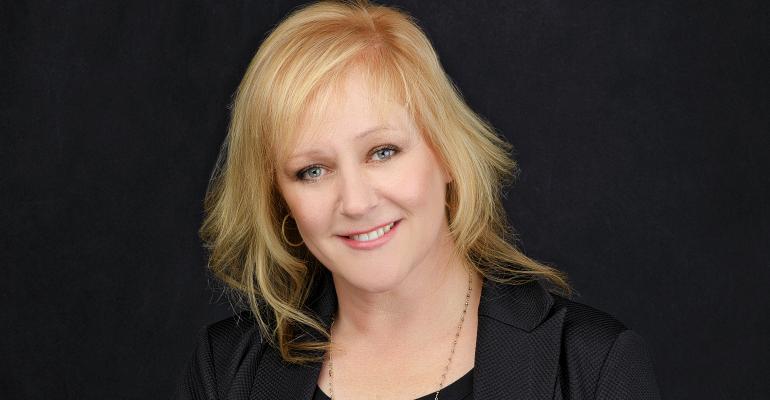The digital age has afforded business owners many luxuries, including the ability to run one’s company virtually from anywhere in the world. In fact, this idea has even formed a new term: digital nomad.
While the thought of spending your workday in pajamas or on the balcony of a beach house is undoubtedly appealing, there’s still a great amount of value in operating a brick-and-mortar store that serves your clientele in person. Running a storefront assures clients (and prospects) that you are a proper business--one with insurance, workers’ comp coverage, and all of the other things a real business needs. While online businesses can have all of those things, the physical presence of a brick-and-mortar sends the message loud and clear.
A proper storefront provides you with the ability to showcase your work and designs as clients walk into the door. They get to meet you in your comfort zone, and you can define every detail of the client experience, from the beverages they are greeted with to the reserved parking spot in front. We all want to be recognized as "real," and there is no way to be more real than with a brick-and-mortar store.
With that said, operating a physical location comes with its challenges--especially when you’re expected to be on the go with event clients. Your storefront’s success should not come at the loss of your booked clients. Here are some tried-and-true strategies to find a happy balance between brick-and-mortar operations and your actual client responsibilities:
1. Hire the right team.
To balance the responsibilities of a store and client management, you need to have a team. Even if you're not at a place to hire a whole staff of full-time employees, you will need to bring on a few or at least some part-time employees. Taking on both as a solopreneur is dangerous for your mental health and the success of your business.
We have a front-of-house customer service manager who knows all of our clients by name, along with their timelines and accounts, so she can answer most questions even if the event coordinators or designers are not in the building. This ensures our clients’ needs are met, without needing the whole team to be at their disposal.
Make sure your in-store customer service representatives are the perfect fit. They need to be welcoming and friendly, as well as diligent and meticulous in managing event details. We work with so many personalities and schedules in this industry, so a positive attitude and organizational skills are a must in this position. Larger spaces need larger teams, too, so this position should seek someone with leadership and management experience.
2. Get organized.
Some days, it can feel like there’s too much to do--thankfully, you have your team to lean on to pick up responsibilities and support your clients’ needs. However, collaboration is most effective when organized and communicated clearly. You may not be on-site most days, but you should be connected to your brick-and-mortar team to ensure everyone is on top of their work.
It’s smart to create weekly schedules. The schedule should include every event happening over the next week, who will be working each of them, their role, and their start time. Share it with everyone and keep an open line of communication with your store manager to ensure everything is going well.
3. Set realistic hours.
Virtual businesses can sometimes feel like they’re always “open,” but with a storefront, you have control over the hours that the doors remain open to the public. We close our brick-and-mortar at 5:00 p.m. to allow us the time to handle large-scale production. Understanding that weekends are reserved for events, we are only open Monday through Friday and by appointment only on Saturday.
That's not to say we aren't hard at work in the building; it just means that we've locked the doors and are focusing on productions in an uninterrupted capacity. Your "open" hours act as boundaries, so it's essential to be realistic and set hours that make sense for your clients but also your team. Communicate your working hours openly through signage and on your website and social media as a way to set expectations with new and existing clients.
4. Invest in your storefront.
It's easy to create a visual aesthetic on social media that speaks for your brand, but your storefront must maintain the integrity of your online presence. A brick-and-mortar makes an immediate statement; it says, "I'm here to stay," and you need to back that up with a comfortable and welcoming environment that adds quality to your client experience.
That’s why you must invest in yourself, your team and your infrastructure. Consider educational opportunities for employees to improve their skills, sit in on a webinar or workshop yourself, and work on upgrades in the building to ensure clients are kept satisfied. If parking has been an ongoing issue, take it to the local government and see how you can improve the situation. You do plan to be there for a long time, so every effort is worth the investment.
When it comes down to it, an amazing team is your key to success--as long as you know your storefront is in good hands, you shouldn’t worry. Believe in your team and believe in yourself. A brick-and-mortar shop can be highly sustainable for a business, both in the manner of attracting clients and increasing the bottom line.
Oleta Collins is the owner of Flourishing Art Design Studio, a premier florist and design studio in Bakersfield, Calif., that specializes in luxury weddings and events. She is also a Certified Floral Designer and an accredited member of the American Institute of Floral Designers.



